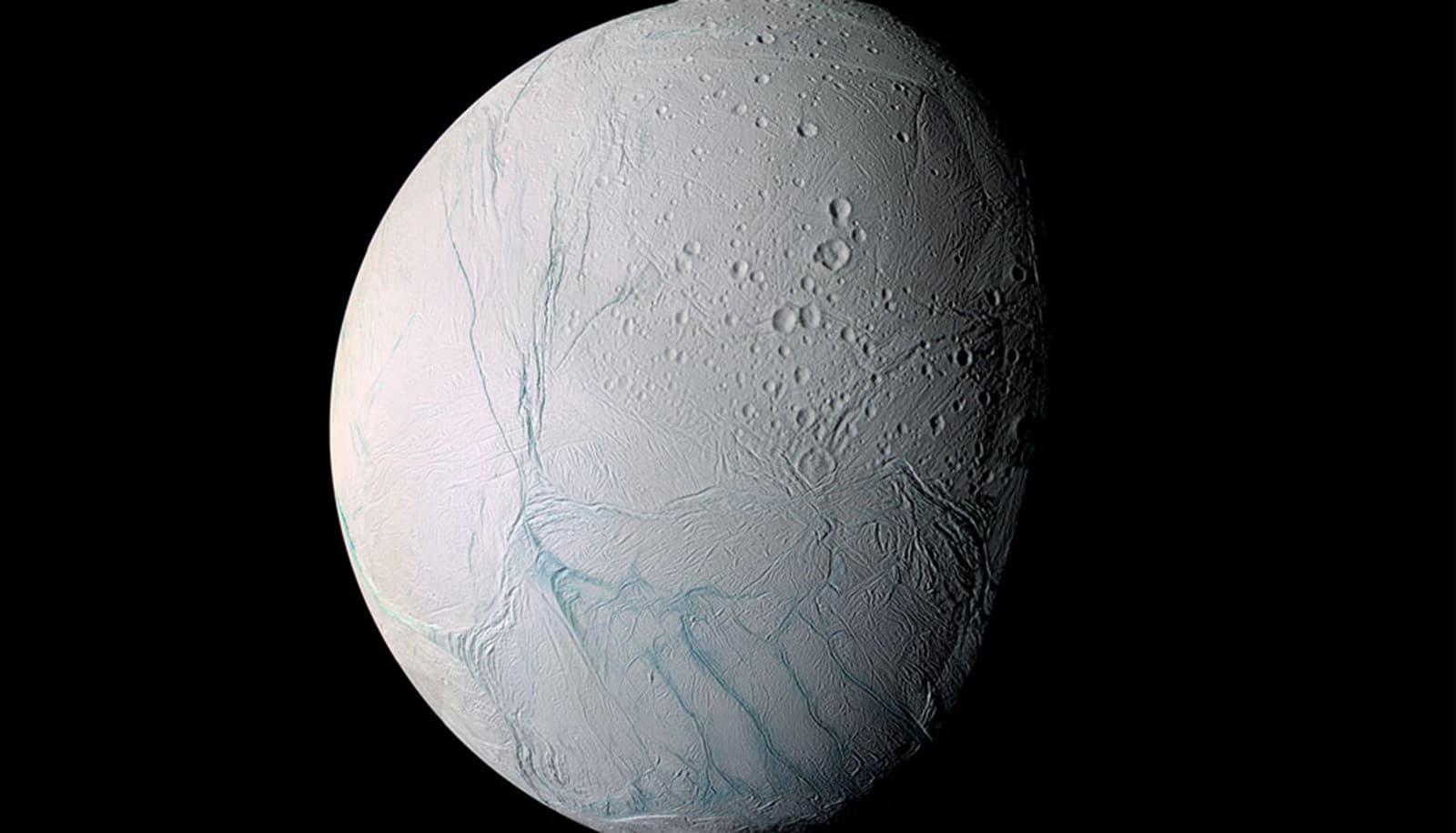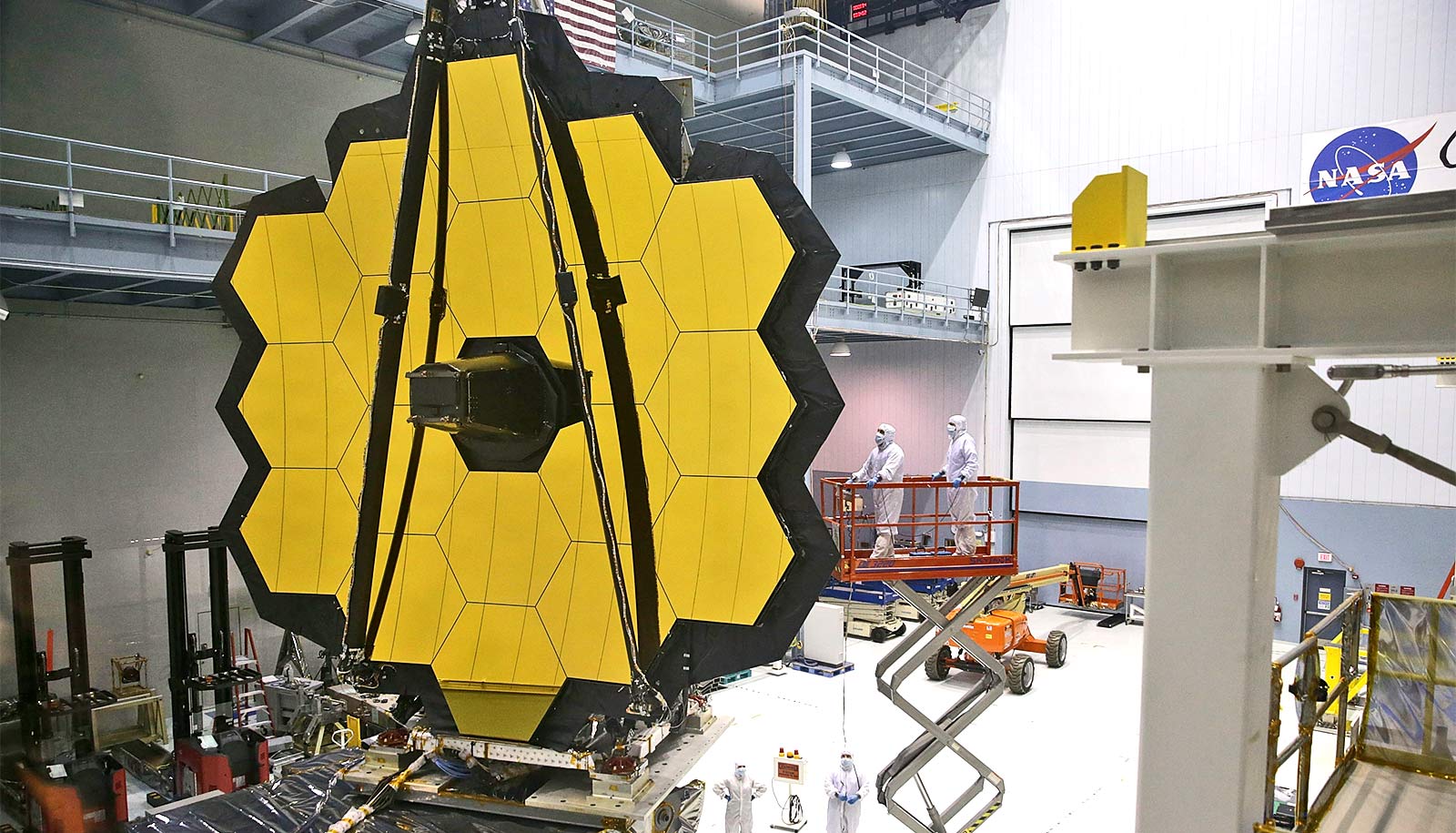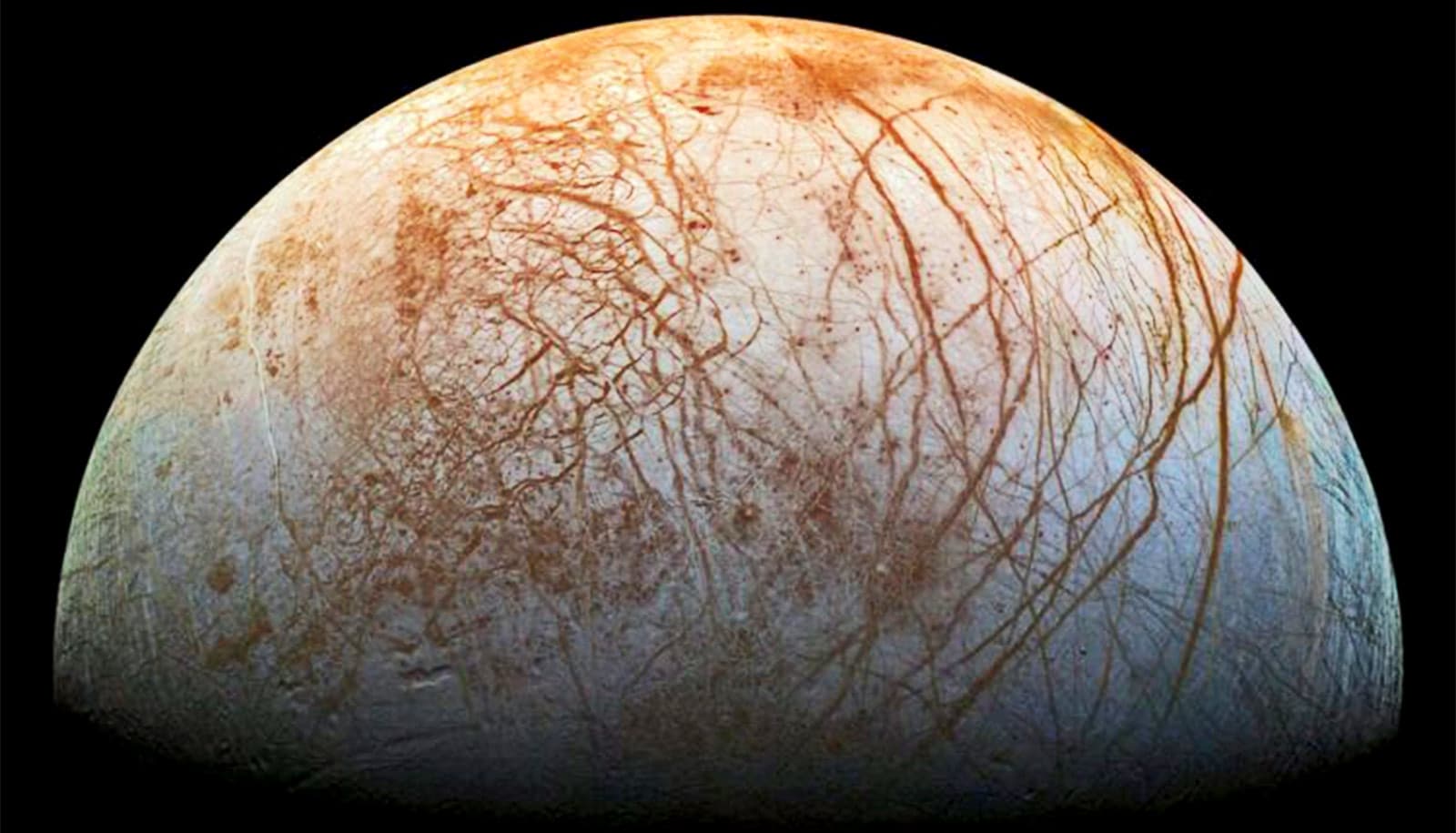In a new analysis of data from one of the Cassini space probe’s instruments, researchers have identified new organic compounds within jets of icy water erupting from Saturn’s moon, Enceladus.
The material likely originated in Enceladus’ ocean, and adds to mounting evidence that the moon could be habitable.
“It appears that Enceladus has all the ingredients for life as we know it.”
“We found a rich organic inventory in Enceladus’ plume,” says Fabian Klenner, a University of Washington postdoctoral researcher of Earth and space sciences and a member of the research team.
“Having clear evidence of a variety of organic compounds from inside an extraterrestrial water world is incredible and further strengthens Enceladus’ potential for habitability. It appears that Enceladus has all the ingredients for life as we know it.”
The results appear in Nature Astronomy.
Launched in 1997, Cassini performed a yearslong series of flybys of Enceladus while in orbit around Saturn, resolving two longstanding mysteries surrounding the system: the origin of Saturn’s enormous but faint E ring and the cause of Enceladus’ unusual brightness. Enceladus, it turns out, is covered in a 16-19 miles thick shell of highly reflective ice which hides a global saltwater ocean. The probe observed fissures in the ice of the moon’s South Polar Terrain ejecting massive quantities of icy water into space. Some of the material forms Saturn’s E ring.
Data from Cassini’s Cosmic Dust Analyzer, or CDA, previously helped researchers identify organic compounds and other key building blocks for life within Saturn’s E ring. Cassini also found material in the E ring that suggests hydrothermal activity deep within Enceladus.
“We suspect that so-called hydrothermal fields exist there—these are vents at the bottom of the ocean from which hot water rises. There is evidence that life on Earth originated in such fields,” says lead author Nozair Khawaja, a research group leader at Freie Universität Berlin.
The new results come from data collected in a close flyby of Enceladus’ icy plume, offering scientists a look at material that had been inside the moon just minutes before.
“The high-speed flyby of Enceladus enabled us to identify new compounds that were not found in the E ring data, most notably esters, alkenes, and ether compounds,” says Klenner, who helped validate the new CDA results. “Notably, esters and ethers can be part of lipids, and lipids are key to life as we know it.”
The success of Cassini has helped stoke considerable investment in future missions to the outer solar system. NASA’s Europa Clipper probe is currently en route to Jupiter to study its moon Europa, which is also a promising candidate in the search for extraterrestrial life.
In the meantime, there’s plenty more Cassini data up for grabs.
“It’s phenomenal to continue learning from the Cassini mission,” says Klenner, who will start a new position as an assistant professor at the University of California, Riverside in December. “Much of the CDA data still isn’t analyzed and I’m so excited about what it may reveal next.”
Additional coauthors are from Freie Universität Berlin; the University of Colorado, Boulder; the Institute of Science Tokyo; and the University of Stuttgart.
Funding for this research came from the European Research Council, the German Aerospace Center, the state of Berlin, and NASA.
This story was adapted from a press release by the University of Stuttgart.
Source: University of Washington



